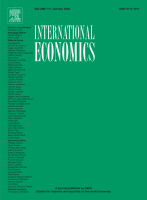Publicado:
Clasificación JEL:
F31, F37, G17

Lo más reciente
Oscar Botero-Ramírez, Andrés Murcia, Hernando Vargas-Herrera
Juliana Jaramillo-Echeverri, Adriana Sofía Rodríguez
Gaurav Khanna, Carlos Alberto Medina-Durango, Anant Nyshadham, Daniel Ramos-Menchelli, Jorge Andrés Tamayo-Castaño, Audrey Tiew
We propose a simple theoretical and empirical approach to differentiate between common and idiosyncratic exchange rate movements in 5 Latin-American economies: Brazil, Chile, Colombia, Mexico, and Peru. Our approach allows us to distinguish the effects of a regional exchange rate common factor and macroeconomic fundamentals differentials on exchange rates. The methodology and estimation strategy are suitable for both low- and high-frequency settings. We provide evidence that the regional common factor is important to assess the dynamics of the Latin-American exchange rates. In our estimations, the relation between exchange rates and the common factor is contemporaneous and stable during the studied period.

